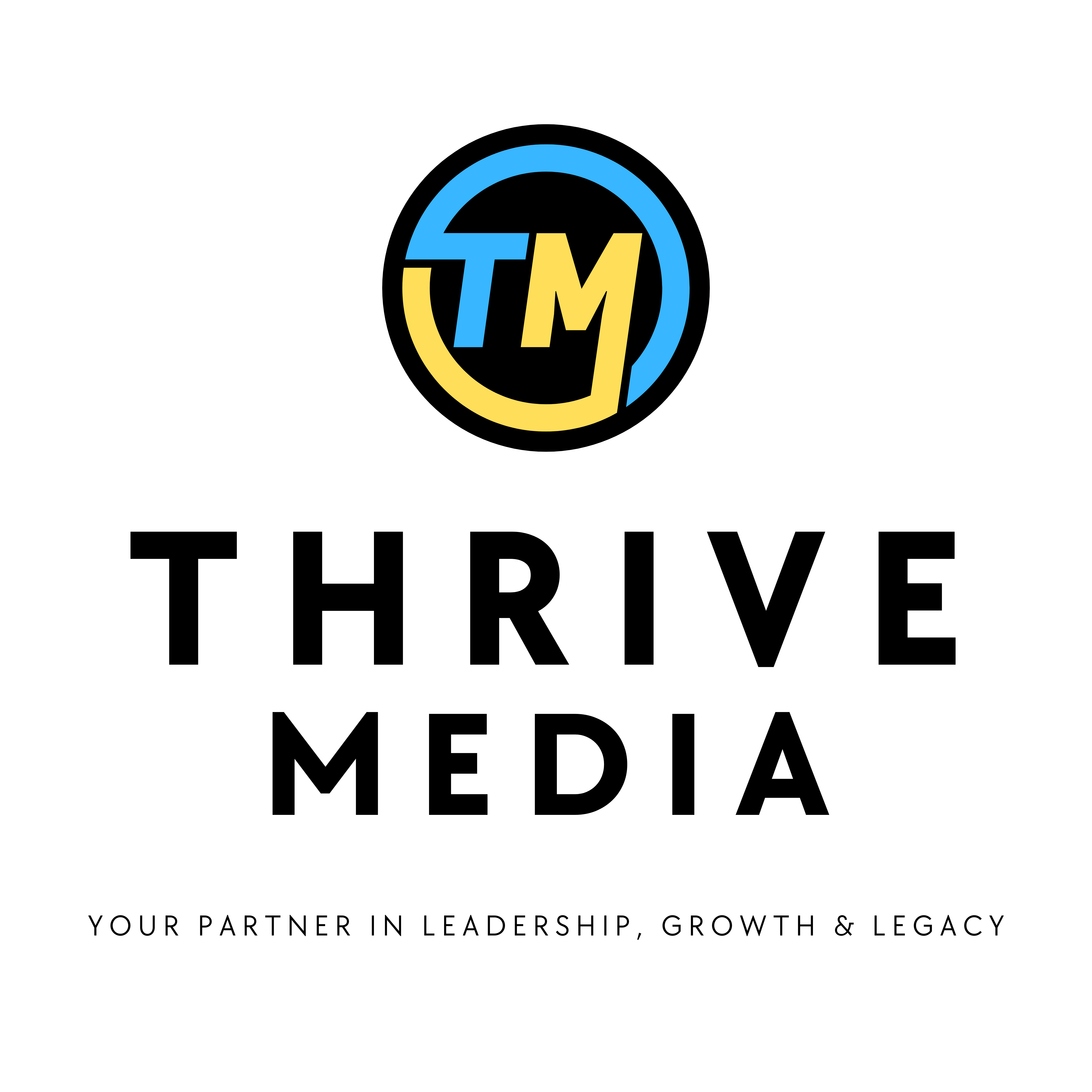When I first focused on the five key life pillars—Health, Fitness, Career, Relationships, and Legacy—my original intention was a personal framework for helping individuals like you and me thrive in midlife. My thinking was that these pillars guide us on our unique journey toward fulfillment by addressing the areas of life that matter most. These five pillars cover virtually every aspect of our lives.
However, as I considered the insights from the Thriving in Midlife Report, produced with Udemy, along with dozens of conversations on the Midlife Fulfilled Podcast, I began to think of these five pillars in a new light—not just as tools for our personal growth, but as a powerful lens for leadership.
A leader’s fulfillment journey is not separate from their role—it is central to it. When leaders develop self-awareness of their personal fulfillment across these five pillars, they become capable of empathy and connection, not previously experienced. This self-awareness equips leaders to guide with purpose and inspire others to thrive. The result is a ripple effect: fulfilled leaders foster fulfilled teams, creating a culture where individuals can bring their best selves to work.
The Five Life Pillars of Fulfillment: A Guide for Individuals and Leaders
Fulfillment is a concept that resonates deeply within us all, yet I’ve learned that it is often misunderstood. Unlike fleeting happiness, fulfillment is enduring, tied to achievement and purpose, and rooted in the alignment of our actions with our core values. At the heart of the Midlife Fulfilled Podcast lies the belief that true fulfillment across our midlife seasons is anchored in these five core life pillars: Health, Fitness, Career, Relationships, and Legacy. These pillars serve as both a personal compass for thriving individuals and a framework for forward-thinking leadership.
In this blog post, I continue my exploration of each of these five pillars, how they shape our unique quest for fulfillment, and why leaders should consider applying these insights to foster fulfillment in organizations.
1. Health: The Foundation of Fulfillment
Health encompasses both physical and mental well-being. Physical health involves everything from the basics of our daily functioning to managing chronic conditions, while mental health entails navigating life’s stresses and opportunities.
For individuals, good health allows us to be present for our loved ones, pursue our passions, and tackle challenges. Without an adequate foundation of health, our focus narrows to basic survival, leaving little (or no) energy for other pursuits, including job performance.
For leaders, cultivating a culture that prioritizes health—through work-life balance, mental health support, and wellness programs—can unlock greater productivity and engagement. A healthy employee isn’t just a happier one, they’re more creative and productive.
2. Fitness: Functionality for Life’s Demands
Fitness is often considered a subset of health, but I chose to give it its own focus in the five pillar framework to fulfillment. Why? Because maintaining physical activity is essential not just for longevity, but for basic functionality. In our midlife seasons, which for many begin in our 30s (contrary to conventional thinking), fitness allows us to carry groceries, travel, help a friend with a house project, go hiking, biking, or walking around a city while on vacation, play with grandchildren, and generally enjoy the small pleasures of daily life.
For individuals, the message is simple: staying active isn’t about vanity; it’s about maintaining independence and quality of life. Small, consistent steps—whether it’s walking, yoga, or lifting weights—compound into significant benefits to quality of life.
For leaders, encouraging fitness contributes to building a high-performing team. Whether it’s sponsoring fitness challenges, creating time for exercise, or simply encouraging employees to prioritize fitness, leaders can help their teams stay physically prepared for the mental demands of their roles.
3. Career: The Economic Engine of Contribution
For most of us, career is the pillar that consumes the greatest amount of our time and energy. It is our primary vehicle for contributing to meeting our family’s needs and is the source of our financial security. However, it is also where fulfillment can fluctuate most dramatically.
For individuals, fulfillment in career isn’t just about promotions or paychecks; it’s about aligning work with values. The pandemic caused many of us to reassess what truly matters in our careers, leading to widespread midlife career reboots. Whether it’s shifting to a new role or finding deeper meaning in a current one, your career should energize, not drain you.
For leaders, career fulfillment for employees should be a strategic priority. By understanding team members’ aspirations and aligning their strengths with organizational goals, leaders can foster both personal and professional growth. This alignment reduces burnout, increases retention, and drives innovation.
4. Relationships: The Web of Connection
No pillar is as emotionally impactful as relationships. Whether it’s family, friends, colleagues, or faith-based communities, our connections anchor us in times of joy and hardship.
For individuals, relationships aren’t measured by how many, but rather by their quality. Take stock of the relationships that nourish you and those that don’t. Building authentic, supportive connections contributes significantly to a fulfilling life.
For leaders, relationships are the cornerstone of a thriving organizational culture. Strong leadership requires empathy, clear communication, and sustained trust. By fostering team connection, leaders can create a sense of belonging and purpose within their organizations, leading to engagement and retention.
5. Legacy: The Desire to Leave a Mark
As we age, the question of legacy becomes increasingly significant. Legacy isn’t just about money or accomplishments—it’s about impact. How will you be remembered? What will you leave behind for others to carry forward? I think of it in terms of what will people say about me at my funeral?
For individuals, legacy can manifest in different ways: nurturing your family, mentoring others, or creating something that outlasts you. It’s the realization that your actions today can shape the future, giving a sense of meaning to your current activities.
For leaders, legacy goes beyond personal ambition. Organizations that succeed over the long term are those where leaders think about the next generation. What systems, values, and innovations are you leaving behind for your team? Leading with legacy in mind ensures that your impact continues even after you move on.
The Interplay Between the Five Pillars
Fulfillment isn’t about achieving perfection in any one pillar—it’s about balance and integration. These five pillars are holistically interconnected. For instance, poor health can undermine career aspirations, while weak relationships can diminish the joy of career success. Fulfillment comes when we give each pillar its due attention, guided by our values and life stage.
As a leader, understanding this interplay can transform how you approach team dynamics. Employees bring their whole selves to work. If one of their pillars is crumbling—be it health, fitness, or relationships—it impacts their productivity and engagement. A fulfilled team is one where individuals feel supported across all dimensions of their lives.
Thriving as Individuals and Leaders
The five life pillars are not just a framework for personal growth—they are a roadmap for modern leadership. As individuals, these pillars guide us to focus on what truly matters. As leaders, they offer a lens through which we can inspire, motivate, and empower others to achieve desirable outcomes.
To thrive as a leader, start by asking yourself these questions:
- How fulfilled are you in each pillar? (Score yourself honestly.)
- Which pillar needs the most attention right now?
- How can you support others—whether family, friends, colleagues or staff members—in their quest for fulfillment?
Remember, fulfillment is not about perfection. At the end of each episode on the Midlife Fulfilled podcast I close it with this: “If you’re 80% fulfilled, you’re doing great!” By leaning into these five pillars, you can not only enrich your own life but also create ripple effects that elevate those around you. Whether as an individual or a leader, fulfillment is worth striving for.
Self-Aware Leadership is Optimized for Success
The five pillars of fulfillment are not just a guide for individual growth; they are a blueprint for transformative leadership. When a leader is keenly attuned to their own journey across Health, Fitness, Career, Relationships, and Legacy, they lead with a depth of empathy and understanding that inspires others to thrive. This is the power of self-awareness—it breaks down barriers, strengthens connections, and cultivates trust.
As you reflect on your own life and leadership, I encourage you to consider these questions: How well do you understand your personal fulfillment across these five pillars? How can this awareness enhance the way you lead? Remember, fulfilled leaders create fulfilled organizations. By embracing this framework, you have the opportunity to not only enrich your own life but to leave a lasting legacy of fulfillment for those you lead.
I invite you to explore my Fulfillment Centric Leadership™ Framework in your organization.
Image source Freepik.







